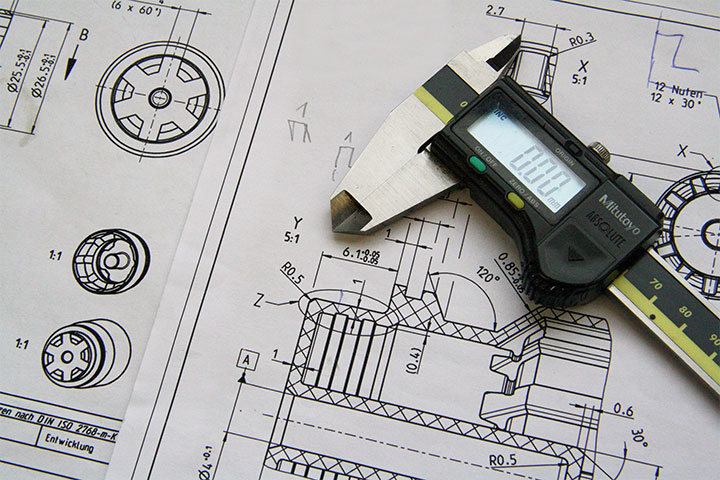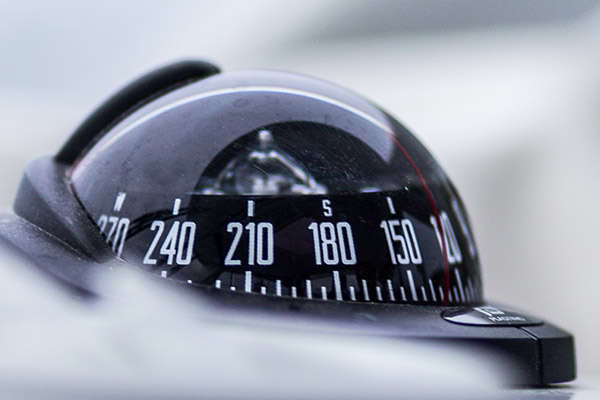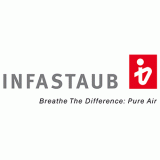
Explosive atmospheres, caused by flammable gases, vapors, fibres or dust, pose significant risks in industrial settings and human lives. Ensuring safety in these environments is crucial. Only specialized equipment designed to prevent ignition can be used in hazardous areas.
The term explosion-proof specifically describes the capability of equipment or systems to withstand the effects of an explosion - including impact and heat - without sustaining damage, while continuing to operate normally.
Explosion protection standards have been evolved over decades in response to industrial accidents and technological progress. Around the world, various countries and regions have implemented their own standards and certification systems for explosion-proof equipment. Examples include IECEx from the International Electrotechnical Commission, OSHA, NFPA, and ASTM in the United States, as well as the ATEX Directive and EN standards in Europe.
The countries of the Eurasian Economic Union have elaborated their own regulation, which provides the safety requirements for electrical and non-electrical equipment operated in potentially explosive surroundings for the protection of life, health, property and the environment.
In our article "Explosion Protection. Explosion-Proof Equipment – Differences Between ATEX and EAC EX Certification" we have looked closer at the main differences between ATEX and TR CU 012/2011 regulations.
The explosion-proof equipment intended for use in potentially explosive environments must be designed and manufactured in accordance with the TR CU 012/2011 On safety of the equipment for operation in explosive atmospheres, so that it ensures that an explosion or a fire resulting from the use of the appliance can be reliably prevented when used as intended.
Application area of TR CU 012/2011
The TR CU 012/2011 applies to all explosion-proof electrical and non-electrical equipment and machinery, including their EX-protection components intended for use in potentially explosive environments. Since the operation of such equipment poses an increased risk to people, property and the environment, the proof of conformity with the security requirements of the EAEU in the form of the EX certification is mandatory for placing on the market.
EAC EX certification
The EX certificate is an official confirmation that the machine meets the Technical Requirements for explosion-proof equipment in Russia and the EAEU of Belarus, Kazakhstan, Armenia and Kyrgyzstan.
All explosion-proof equipment and machines, including those that contain EX components are subject to EAC EX certification. This excludes:
- medical technology
- devices which can explode when explosive substances and unstable chemical compounds are present
- household appliances
- personal protective equipment
- seagoing vessels and barges, mobile offshore platforms and oil rigs
- air, road, rail or water vehicles
- nuclear weapons and nuclear research facilities
EX equipment is divided into three groups:
- Group I - equipment for mines, quarries and ore processing plants
- Group II - equipment for use in areas exposed to gas, other than underground mining
- Group III - equipment for use in areas subject to explosion hazard due to dust exposure, other than underground mining
Each group is subdivided into three protection levels of the explosion protection A, B and C, as well as six classes of fire protection.
Legal framework
Until 15 February 2013, the EX certificate of conformity in Russia was carried out in accordance with the GOST standards from the Soviet Union. The GOST certificate was used as an EAC EX certificate of conformity. As a result of the coordination of the Technical Regulation in the EUEA between Russia, Belarus, Kazakhstan, Armenia and Kyrgyzstan, the entry into force of the Technical Regulation TR CU 012/2011 "On safety of the equipment for operation in explosive atmospheres" applies new EAC certification rules.
Since the reform, the certification of the explosion-proof equipment has been carried out exclusively in the form of EAC certification. The EAC declaration for the explosion-proof equipment is not provided.
The Technical Regulations TR CU 012/2011 "On safety of the equipment for operation in explosive atmospheres" was adopted on 18 October 2011 by Commission Decision № 825.
The EAC EX certification in the EUEA is similar in many respects to the European System of ATEX certification according to Directive 2014/34 / EU or Directive 94/9 / EC. Nevertheless, there are significant differences. If you already have an ATEX certificate for your equipment, this can simplify the EX certification for the Russian market but not replace it.
The EAC EX certificate is required for the export of explosion-proof equipment to Russia, Kazakhstan and the EUEA and cannot be replaced by the ATEX certificate.
Required documents:

- information on the manufacturer
- customs tariff number
- technical passport
- ignition hazard assessment for EX equipment
- instruction manual
- test reports
- detailed product description
- technical drawings
- technical data sheet
- ATEX certificate
In addition, product samples are necessary for the tests. The number of necessary product samples depends on the type of equipment.
Certification matrix
For the EAC EX certification of complex explosion-proof equipment, it is advisable to create a certification matrix yourself or let the experts do it. The certification matrix provides an overview of which explosion-proof components require which certificates of conformity and additional documents.
The matrix is mostly written in Excel format and consists of the following fields:
- name of the product
- Information about the manufacturer
- ATEX marking
- designation of the required certificate of conformity
- designation of the required technical documentation
Certification procedure
The application for a conformity certificate will take approximately 12 weeks. This period only starts once all documents required for the conformity assessment have been received.
Step 0:
Documents required for certification or to prepare a certification application:
- Technical documentation for EAC certification of EX equipment: Technical Passport, Operating Manual, Ignition Hazard Assessment, according to TR ZU 012/2011
- Product name (must match the supply contract)
- EX marking of the product
- List of all EX components of a product, including: EX marking, manufacturer, model
- TR ZU 012 certificate for all EX components. If an EAC certificate for an EX component is missing: an ATEX conformity declaration with a technical datasheet, a drawing, and a wiring diagram
- Photos of all EX components with clearly legible nameplates (models, manufacturers, and EX markings must match the corresponding TR ZU 012 certificates)
- Application area of the product
- Maximum storage period and service life of the product
- Operating manual in Russian. If not available in Russian, it must be translated. Translation time is not included in the timeline
- Risk analysis in Russian. If not available in Russian, it must be translated. Translation time is not included in the timeline.
- Technical specifications of the product: datasheet, functional description, maintenance and repair information
- ATEX conformity declaration with test reports for the product
- Photos of the product
- Wiring diagram of the product
- Drawing of the product with material specifications
If any item from the above list is missing, the certification timeline does not start.
Please name the files according to the documents/information above and provide them as separate files. If a file contains multiple sections, please indicate the relevant pages.
Step 1:
We prepare a certification application based on the provided documents/information.
Timeline: 1 week
Step 2:
We receive a draft certificate from a certification body. We adjust the draft and send it to you. You confirm that the draft is correct.
Timeline: 3–4 weeks (Note: we assume you will review and confirm the draft within one week. Additional time is not included in this timeline.)
Step 3:
We prepare a nameplate based on the draft confirmed by you. You print the nameplate in DIN-A4 format, attach it to the product, and photograph the product with the nameplate for formal identification. Timeline: 3–5 days
Step 4:
Final confirmation of the draft by you. After the final confirmation, no further changes can be made. Timeline: 3–5 days
Step 5:
Manufacturing audit , currently only for serial production.
Timeline: 3–5 days
Step 6:
The certification body performs product tests in a laboratory, at your site, or at a customer site. They then prepare a test report for your product.
Timeline: 3 weeks
Step 7:
The completed documents are signed by you and sent to the certification body in original form.
Timeline: 3 days
Step 8:
The certification body processes the documents and issues the EAC certificate.
Timeline: 1–2 weeks
Thus, a project for an EAC certification under TR ZU 012 takes approximately 11–12 weeks after Step 0.
We rely on good cooperation with you to avoid delays. If it is found in any step that something from Step 0 is missing or incorrect, the timeline is paused until the correct document is submitted.
Schemes of EX certification
| Scheme | Description |
|---|---|
| 1C | is intended for series production. In this case, samples are to be tested and a manufacturing audit is to be carried out. |
| 3C | is intended for a batch delivery. In this case, a samplefrom this batch is to be tested. No manufacturing audit is required. |
| 4C | is intended for a single delivery. In this case, samples are to be tested. No manufacturing audit is required |
Single delivery vs. series delivery (short comparison)
| Criteria | Single delivery (contract) | Series production |
|---|---|---|
| Validity | Only for the delivery defined in the contract | Fixed validity, typically 1–5 years |
| Tests | Sample from the batch | Product/Type tests |
| Manufacturing audit | Not required | Audit is required |
| Inspection control | Not required | Annually |
| Appropriate for | One-time/rare deliveries | Regular exports |
Manufacturing audit within the EAC Ex-Certification
The technical regulation TR CU 012/2011 requires a mandatory inspection of the production site(s) (if the product is manufactured at multiple sites) and the manufacturer’s quality management system.
The audit is carried out on-site by an accredited certification body. Its primary purpose is to verify whether the production processes meet the specified requirements. The execution of the production audit is governed by the national standard of the Russian Federation GOST R 54293-2010 “Production Audit for Conformity Assessment Procedures.”
Regular Inspection Control within the EAC Ex-Certification
After the issuance of an EAC Ex-Certificate, a regular inspection control is required. The monitoring is carried out annually to ensure that production continues to comply with the technical regulations of the Eurasian Economic Union (EAEU) and that the products are correctly marked with the EAC mark or conformity marking. Without a successfully completed inspection control, the EAC certificate loses its validity.
Inspection control refers to a systematic, recurring conformity assessment carried out by the certification body that originally issued the EAC certificate. This includes, among other things, the review of production documentation, quality management processes, and sampling of products. This regular inspection forms the basis for the maintenance of the validity of the EAC certificate.
Mandatory EAC Ex Marking of products

Explosion-proof equipment certified according to TR CU 012/2011 must be marked with both the EAC mark and the Ex symbol. The Ex mark is a mandatory identifier confirming explosion protection and must be applied directly to the product, its nameplate, or accompanying documentation.
The EAC Ex marking consists of a stylized combination of the letters “E” and “x,” where the “x” denotes explosion protection. The “x” has a height of 5/9 of the “E,” and the symbol must be placed on a white or contrasting background to ensure clear visibility. The minimum height of the symbol is 10 mm, and the height-to-width ratio is 11:8.
Together with the Ex symbol, additional information must be indicated on the equipment: the equipment group, category, type of explosion protection, temperature class, and any other required identification details. Every explosion-proof device, Ex component, or assembly covered by the certificate must carry the complete EAC Ex marking.
Period of validity of EAC conformity assessment certificates
The validity period of the EAC certificate for Explosion-proof equipment differs depending on the selected scheme, which depends on the type of production (serial production, individual delivery, etc.). The maximum validity under Scheme 1c is 5 years.
Differences between ATEX and EAC Ex Certification
When manufacturing or exporting explosion-proof equipment, it is essential to understand the differences between ATEX certification required in the European Union and EAC Ex certification required in the Eurasian Economic Union (EAEU). Although both systems regulate equipment intended for use in hazardous areas, they are based on different legal frameworks and follow independent conformity assessment procedures.
General overview
- ATEX (EU): Regulated by Directive 2014/34/EU. ATEX certification is mandatory for placing explosion-proof equipment on the EU/EEA market. Products must bear the CE and Ex markings after the conformity assessment has been completed.
- EAC Ex (EAEU): Required for placing explosion-proof equipment on the market of the EAEU member states (Russia, Kazakhstan, Belarus, Armenia, Kyrgyzstan). Certification is carried out according to Technical Regulation TR CU 012/2011 “On safety of equipment for use in explosive atmospheres”. ATEX certificates are not recognised within the EAEU and cannot replace EAC Ex certification.
Conformity assessment procedures
- ATEX: Depending on the equipment category, the manufacturer may carry out internal production control (self-declaration) or may need to involve a notified body for testing and certification.
- EAC Ex: Self-declaration is not permitted. Conformity assessment must always be conducted by an EAEU-accredited certification body and includes testing of samples, evaluation of technical documentation, and, for serial production, a mandatory production audit.
Marking and documentation requirements
| Aspect | ATEX (EU) | EAC Ex (EAEU) |
|---|---|---|
| Regulatory basis | Directive 2014/34/EU (ATEX) | Technical Regulation TR CU 012/2011 |
| Marking | CE marking + Ex marking according to ATEX classification | EAC marking + Ex marking according to TR CU 012/2011 |
| Type of conformity assessment | Self-declaration for certain categories; certification by a notified body for higher-risk equipment | Certification only; testing and approval must be performed by an EAEU-accredited certification body |
| Market validity | European Union / EEA | Eurasian Economic Union (RU, KZ, BY, AM, KG) |
Practical implications for manufacturers and exporters
An ATEX certificate or IECEx certificate may provide useful technical test data, but it cannot replace EAC Ex certification. For placing products on the EAEU market, a separate conformity assessment procedure according to TR CU 012/2011 is always required. Without EAC Ex certification, importing or operating explosion-proof equipment in EAEU countries is not permitted.
Manufacturers supplying equipment to both the EU and EAEU markets will therefore need to comply with two different certification systems. We support companies throughout the entire process — from the evaluation of technical documentation to testing, certification, and the appointment of an authorised representative in the EAEU.
For more details, please refer to our full article: Differences Between ATEX and EAC Ex Certification.
Costs for EAC Ex-Certification
The duration and costs associated with an EAC certificate application for Explosion-proof equipment depend on several different factors, such as the classification of the product, any required laboratory checks and the complexity of all examinations. As such the exact conditions of the EAC certification are always determined individually based on the required documentation. Please note that an application for an EAC certificate can take several weeks to process.
- Type and complexity of the products: Design, number of explosion-protected components, number of Ex-markings
- Scope of testing: depends on the type of explosion protection and construction of the equipment
- Completeness of documentation: Technical documentation, drawings, test reports
- Type of delivery: Single delivery (contract-related) or serial production which stipulates conduction of the manufacturing audit
- Samples for testing: amount of the required samples depends on the amount of types/models and number of differeтt ex-markings. Selection of representative models is crucial – Correct selection and shipment of samples is part of cost planning
How long does the EAC Ex certification process take?
Applying for an EAC Ex certificate is a time-consuming and cost-intensive process. On average, the processing time usually takes several weeks but may vary depending on the complexity of the project.
The duration of the certification process depends on the following factors:
- Type of delivery: Single shipment (contract-based) vs. serial production - for serial production a manufacturing audit must be conducted
- Product characteristics: Complexity, number of different types and ex-proof components - it influences the scope of testing
- Audit: audit is necessary for scheme 1c
- Completeness of documentation: Technical documentation, drawings, test reports.
- Availability of samples: Selection and shipment of product samples for laboratory testing
Does the device need to have an ATEX or IECEx certificate to obtain the EAC Ex certificate?
No, an ATEX certificate or other approvals for explosion-protected equipment are not a prerequisite for obtaining certification under TR CU 012/2011. The certification body independently verifies the safety of the device regardless of existing approvals. However, having an ATEX certificate can facilitate the EAC certification process.
It is also important to understand that ATEX or IECEx certificates are not recognized as proof of explosion safety within the Eurasian Economic Union. To sell and operate explosion-protected equipment in the EAEU, an EAC certificate under TR CU 012/2011 must be issued.
Explosion protection is a field that globally follows nearly uniform basic principles of explosion safety. In Europe, Directive ATEX 2014/34/EU applies. ATEX is the European Union directive regulating the safety of equipment and protective systems intended for use in explosive atmospheres. TR CU 012/2011 "On the Safety of Equipment for Use in Explosive Atmospheres" is the technical regulation of the Eurasian Economic Union (EAEU) that ensures the safety of equipment in explosive atmospheres within member states (Kazakhstan, Russia, Belarus, Armenia, and Kyrgyzstan).
Although the two documents share many overlaps and remarkable similarities (some phrases are identical), there are also significant differences. You can read more about the differences between ATEX and EAC Ex certification in our article "Explosion Protection. Explosion-Protected Equipment – Differences between ATEX and EAC EX Certification".
Are the test reports or audits from ATEX certification recognized?
No, EAC certification is an independent process. The ATEX certificate and test reports are helpful references, but they cannot replace the audit or the product testing conducted by an accredited certification body. The technical regulation TR CU 012/2011 requires that product samples be tested by a laboratory approved within the EAEU. The same applies to the site inspection and the quality management system audit for serial production (Scheme 1c).
Can explosion-protected equipment with an EAC Ex certificate also be installed in safe areas?
Yes. You only need to check whether other regulations may also apply. For example, an existing Ex certificate cannot replace the requirements of TR CU 004 "On the Safety of Low-Voltage Equipment". It is also important to note that as soon as the equipment bears an Ex marking, it must have the Ex certificate, even if it is used in non-hazardous areas.
Can the EAC Ex certificate be replaced by an EAC Ex declaration?
No. In the technical regulation TR CU 012/2011, a manufacturer’s declaration (EAC Declaration) is not provided for. Unlike the European system under ATEX Directive 2014/34/EU, where the manufacturer may declare conformity independently for certain equipment categories (e.g., under Module A – Internal Production Control), the EAEU regulation only allows certification by an accredited certification body within the EAEU.
This means that the manufacturer or its authorized representative in the Eurasian Economic Union (EAEU) must submit an application to a certification body accredited in one of the member states. This body conducts the review of technical documentation, product samples, and the quality management system.
An independent “manufacturer’s declaration” or self-certification—permissible under ATEX for certain product categories—is therefore not allowed under the EAEU system.
Who is responsible for compliance with regulations in the EAEU?
Similar to ATEX certification, either the manufacturer(if it is a domestic manufacturer) or the authorized representative is responsible for ensuring that the regulations are followed.
Authorized representative for EAC EX Certification

A manufacturer that is not established in one of the member states of the Eurasian Economic Union is not entitled to apply for conformity assessment of its products for compliance with the requirements of the relevant technical regulations.
In order to carry out a conformity assessment nonetheless, the foreign manufacturer must appoint an authorized representative in one of the member states of the Eurasian Economic Union. This representative then acts on behalf of the foreign manufacturer in cooperation with the certification bodies of the Eurasian Economic Union regarding the safety and quality of the products and their compliance with technical regulations.
According to applicable law and in accordance with the technical regulation of the Economic Union, only an entrepreneur located in the territory of the Eurasian Economic Union may be appointed as an authorized representative.
Schmidt & Schmidt supports manufacturers from Europe, America, and Asia in appointing an authorized representative in the EAEU. Thanks to our legally compliant solution concept through Kazakhstan – a member state of the EAEU – we can ensure the issuance of EAC certificates. Through our local offices, we ensure that the entire certification process complies not only with the technical regulations of the Eurasian Economic Union, but is also carried out in accordance with European and American sanctions regulations. In this way, our clients receive a reliable and legal access to the EAEU market.
Responsibility for violations of requirements
Distributing products without a valid EAC conformity certificate, or with falsified or unreliable documentation, carries significant penalties under Chapter 14 of the Code of Administrative Offenses. These penalties can include fines of up to tens of thousands of euros, suspension of business operations, seizure of products, and—in cases where life, health, or the environment is endangered—even criminal consequences. An overview of possible sanctions for violations of EAC certification rules can be found in our expert article. Therefore, it is of utmost importance to take the EAC conformity assessment seriously.
Can the EAC Ex certificate be extended?
Extension of the certificate is not provided for in the TR CU regulation. After the expiration date (usually after 5 years), the certificate is archived in the register. If the product continues to be sold, a new certification must be applied for. The entire certification process must be repeated.
Can the EAC Ex certificate be revoked?
Yes. The EAC Ex certificate can be suspended or revoked in accordance with the provisions of the technical regulation TR CU 012/2011 “On the Safety of Equipment for Use in Explosive Atmospheres” and the accreditation rules of the Eurasian Economic Union (EAEU).
The suspension or withdrawal is carried out by the accredited certification body and documented in the unified EAEU register. The certificate status is then updated to:
- suspended, or
- annulled
After revocation, the “EAC Ex” marking may no longer be used on the product or in accompanying documentation.
Reasons for Revocation or Suspension
- Non-conformity of products: The product does not match the tested sample or has been modified without informing the certification body.
- Missing or incomplete technical documentation: e.g., missing safety justification (Обоснование безопасности), operating manual (РЭ), or test reports.
- Errors or manipulation: Irregularities in test reports, documentation, or EAC markings.
- Failure to pass inspection control: For serial production, an annual inspection is required. Failure to conduct it leads to temporary suspension and ultimately revocation of the certificate.
- Termination of the certification body’s activity: Loss or withdrawal of accreditation.
- Voluntary withdrawal: The applicant (manufacturer or authorized representative) may request revocation.
Certificate Restoration
A suspended certificate can be reactivated if the manufacturer corrects the identified deficiencies and provides evidence or passes a new audit. An annulled certificate cannot be reactivated.
Compliance with EU and US sanctions in the context of EAC Certification

In addition to the technical regulations of the Eurasian Economic Union (EAEU), European and international companies must also comply with the applicable sanctions of the European Union and the United States when undergoing EAC certification. These regulations particularly concern the export of certain goods, trade with listed individuals and entities, and the provision of technical services. Non-compliance may not only jeopardize business relationships but also entail civil and criminal liability.
The situation is especially critical for exports to Russia and Belarus. Due to the geopolitical situation, numerous embargoes and restrictive measures have been imposed since 2014, which can directly affect the conformity assessment process. For example, it is possible that conformity assessment bodies or business partners in the affected countries are listed on sanctions lists, making cooperation legally impermissible. Therefore, companies must carefully review not only the technical regulations but also the current EU and US sanctions lists.
Another risk arises if a shipment is blocked due to sanctions violations. Even a formally correct conformity assessment does not provide legal certainty in such cases. Therefore, close coordination between compliance departments, export control officers, and certification partners is essential to avoid legal conflicts and to secure the supply chains.
Companies that aim to successfully export their objects of conformity assessment (products) to Kazakhstan, Russia, or other EAEU Member States should not focus solely on compliance with technical regulations but also ensure comprehensive sanctions compliance. This includes reviewing the end-use of products and selecting appropriate authorized representatives and local partners.
Schmidt & Schmidt provides a legally compliant solution via Kazakhstan. As an EAEU Member State, Kazakhstan is authorized to issue EAC certificates and EAC declarations. Through our local offices, we ensure that all conformity assessment processes are carried out in compliance with European and US sanctions regulations while enabling our clients to access the EAEU market.Detailed information on current developments can be found in our article: EAC Certification Amid EU and US Sanctions against Russia and Belarus.
Delivery of the documentation
If you order the EAC Certificate on Explosion-proof equipment, you will receive a copy of it via email immediately after our successful certification procedure. The original document and two certified copies will be sent by post.



















































